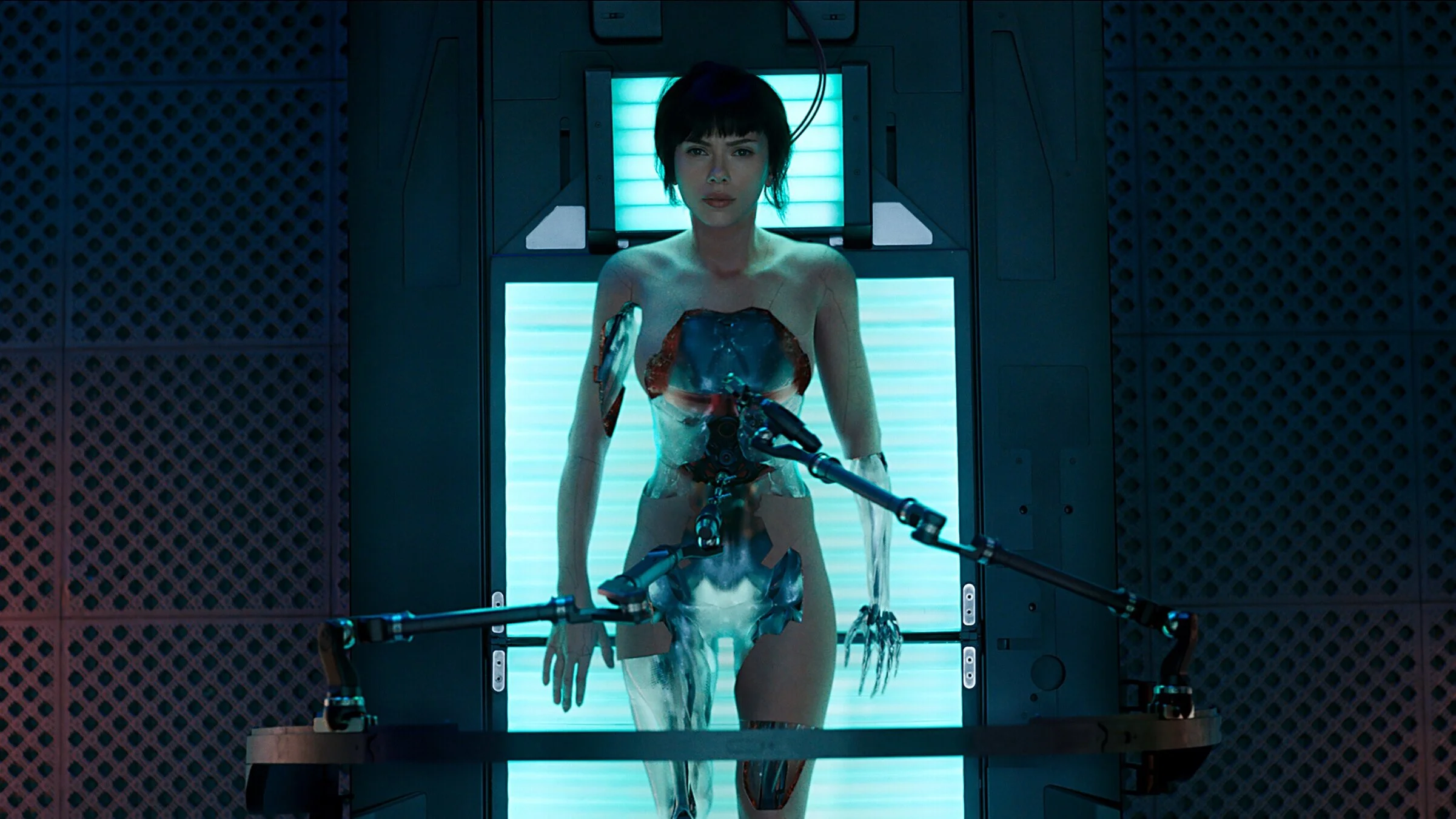Ghost in the Shell
In a world of cybernetic upgrades and brain-hacking, Scarlett Johansson comes to the rescue - as the first in a new breed of super-human.
Ghost World: Scarlett Johansson
There are a lot of films packed into Ghost in the Shell. And all of them are engaging. At a time when naysayers are expressing concern for the role robotics is taking in the workplace – and in the home – this adaptation of the manga comic takes the dilemma to a whole new level. In this instance it’s the ‘shell,’ or the body, that is host to the consciousness, or the soul, or the ‘ghost’. Much sci-fi has explored the unlikely event of man-made machines developing artificial intelligence. Here, though, we’ve moved up a gear. We’re in a near future in which the line between machine and human has become completely blurred; a world in which the human race is augmented with cybernetic add-ons, while automatons have acquired a humanoid appearance and agility. And neither we, nor the machines, are entirely sure who we are anymore.
Scarlett Johansson plays Mira Killian, a refugee whose boat was sunk by terrorists. In the attack only her brain survived and so it is transplanted into a new, highly performing synthetic body. But she’s plagued by indeterminate memories of a past life with which she cannot connect. She is, though, a perfect weapon and is duly conscripted to help track down the terrorist who almost annihilated her. “I will find him,” she says, “and I will kill him,” referencing a line that has become almost mandatory in certain pop culturally aware thrillers. More importantly, she is recruited to locate a new breed of cyber-criminal that is hacking into people’s brains and infecting them via the Internet.
Much like the figures that populate its fantastical cityscape, Ghost in the Shell is a hybrid, part live-action, part-computer animation. Under the direction of the English filmmaker Rupert Sanders (Snow White and the Huntsman), it is a visual miracle, even in this era of weekly CGI wonders. With its blend of the old, the new and the futuristic, it recalls the rain-splashed, neon-lit world of Blade Runner, with holograms dominating the landscape. But on the colourful, rancid side streets of this dystopia (shot in Hong Kong), the stench of the everyday still jostles with the glittering technology. And while Scarlett Johansson is all brain (albeit with an eye-catching cybernetic bod), her heart is still tucked away in her psyche.
In many ways, the standout scene is unlike anything else that precedes it. For one brief shining moment the film stops in its tracks. An elderly woman (the wonderful Kaori Momoi) invites Mira into her humble apartment. And as she makes our heroine a cup of tea, the film takes a huge intake of breath. Mira is not sure why she’s there, and nor are we, but a human connection is made and it’s all the more touching for its gentle incongruity.
Ultimately, the film is a meditation on identity: are we the sum of our memories or something more? In the words of Juliette Binoche’s Dr Ouelet, we are defined by what we do, not by what we remember. After all, the memory is so unreliable.
JAMES CAMERON-WILSON
Cast: Scarlett Johansson, 'Beat' Takeshi Kitano, Michael Pitt, Pilou Asbæk, Chin Han, Juliette Binoche, Peter Ferdinando, Anamaria Marinca, Kaori Momoi, Danusia Samal, Michael Wincott.
Dir Rupert Sanders, Pro Ari Arad, Avi Arad, Steven Paul and Michael Costigan, Screenplay Jamie Moss, William Wheeler and Ehren Kruger, Ph Jess Hall, Pro Des Jan Roelfs, Ed Neil Smith and Billy Rich, Music Clint Mansell and Lorne Balfe, Costumes Kurt and Bart.
Paramount Pictures/DreamWorks Pictures/Reliance Entertainment/Amblin Partners-Paramount Pictures.
106 mins. USA. 2017. Rel: 30 March 2017. Cert. 12A.


